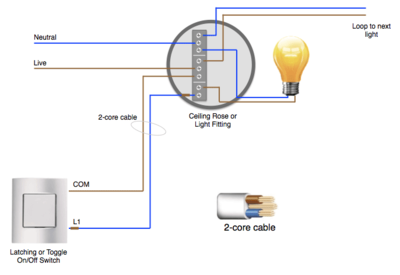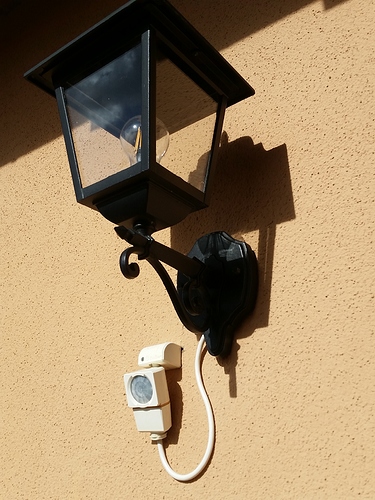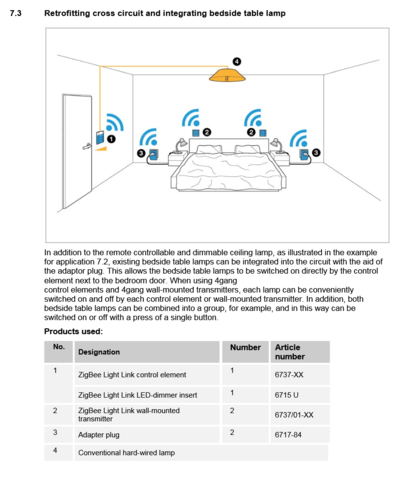Internet Of Things: Difference between revisions
| Line 25: | Line 25: | ||
[http://store.homeseer.com/store/HomeSeer-HomeTroller-S6-PRO-Home-Automation-Controller-P1876.aspx HomeSeer HomeTroller S6: $899] | [http://store.homeseer.com/store/HomeSeer-HomeTroller-S6-PRO-Home-Automation-Controller-P1876.aspx HomeSeer HomeTroller S6: $899] | ||
[https://shop.smartthings.com/#!/products/samsung-smartthings-hub Smartthings hub] which supports Wifi, Zigbee, Z-Wave at $99, now owned by Samsung | |||
[https://www.smartthings.com/compatible-products This is the list of compatible devices] | [https://www.smartthings.com/compatible-products This is the list of compatible devices] | ||
| Line 36: | Line 36: | ||
[http://www.openhab.org/ ppenHAB] written in java | [http://www.openhab.org/ ppenHAB] written in java | ||
[https://www.zipato.com/shop?country=nl Zipato, which comes with a beatiful tile interace thingie] | [https://www.zipato.com/shop?country=nl Zipato, which comes with a beatiful tile interace thingie] | ||
[https://www.openhab.org/ OpenHab] a vendor and technology agnostic open source automation software for your home | [https://www.openhab.org/ OpenHab] a vendor and technology agnostic open source automation software for your home | ||
== best bet currently == | |||
[https://www.home-assistant.io/ Home Assistant], Open source home automation that puts local control and privacy first. Powered by a worldwide community of tinkerers and DIY enthusiasts. Perfect to run on a Raspberry Pi or a local server. It runs on [https://www.home-assistant.io/hassio Hass.io], which turns your Raspberry Pi (or another device) into the ultimate home automation hub powered by Home Assistant. With Hass.io you can focus on integrating your devices and writing automations. | [https://www.home-assistant.io/ Home Assistant], Open source home automation that puts local control and privacy first. Powered by a worldwide community of tinkerers and DIY enthusiasts. Perfect to run on a Raspberry Pi or a local server. It runs on [https://www.home-assistant.io/hassio Hass.io], which turns your Raspberry Pi (or another device) into the ultimate home automation hub powered by Home Assistant. With Hass.io you can focus on integrating your devices and writing automations. | ||
Revision as of 15:11, 9 November 2018
Protocols
You would think that this would be straightforward but it isn't. Common protocols are:
- Wifi
- Zigbee - this means your bridge has to speak the Zigbee language (see below) the device has to work with it
-- LightLink (EU)
-- Home Automation (US) Note - these two protocols don't play well with each other. It looks like HA is being phased out in favour of LL.
-- Smart Energy
- Z-Wave
- X-Wave
contoller / Smart Hub
The controller runs the bridge devices that each individual vendor brings with their devices. It's a single central place to run all of the devices from.
The absolute Ferrari on controllers is:
Smartthings hub which supports Wifi, Zigbee, Z-Wave at $99, now owned by Samsung
This is the list of compatible devices
As an alternative you can run open source software, which will run on a raspberry pi with a zigbee usb controller.
Project Things from Mozilla
ppenHAB written in java
Zipato, which comes with a beatiful tile interace thingie
OpenHab a vendor and technology agnostic open source automation software for your home
best bet currently
Home Assistant, Open source home automation that puts local control and privacy first. Powered by a worldwide community of tinkerers and DIY enthusiasts. Perfect to run on a Raspberry Pi or a local server. It runs on Hass.io, which turns your Raspberry Pi (or another device) into the ultimate home automation hub powered by Home Assistant. With Hass.io you can focus on integrating your devices and writing automations.
Home Assistant has huge amounts of compatible components
It's championed in the bottom of this thread
Bridges
Bridges are hardware connections.
The HUE bridge has a limit of 50 connections. You can add another bridge to your HUE app, but you will have to switch bridges within the app, which is annoying. You also can't backup your setup.
The Dresden Elektronik Raspbee Premium (SD card image [1]) doesn't have the 50 device limitation and has a backup function. It can be used through the HUE app itself. It also uses deConz software to detect devices. These also support Xiaomi devices.
The Dresden Elektronik Conbee is a usb zigbee stick for windows machines
The husbzb-1 Z-Wave / Zigbee USB device. From [2]
I have husbzb-1. I went out of my way to find out more about this device. I contacted both Nortek and SiliconLabs for help, which is not that helpful.
It turned out that husbzb-1 is mostly a z-wave device. The zigbee is just something the OEM threw in as “added value” and the OEM themselves doesn’t know much about it.
As result, you can expect this thing work well with z-wave.
Zigbee, on the other hand, is a bit tricky.
Much of the tricky part is due to zigbee standard itself. Unlike z-wave, which is practically all-in-one, so as long as there is the word “z-wave”, it should work with each other within a country/region.
Zigbee, on the other hand, by itself doesn’t mean anything from an user’s perspective, because much of compatibility rely on zigbee PLUS some libraries built into the device.
if you have a zigbee device (e.g. light bulb, sensors, etc), you kind of need to know which library that device uses, and you need to make sure your zigbee dongle (husbzb-1) has that built-in as well. These library, though mostly software, can not be added or delete once the device is out of factory.
For our purposes, home automation, there are THREE libraries that may be relevant:
home automation
light link
smart energy
The worse part is that zigbee allow vendor to create their own proprietary library, renders device from that company incompatible with anything else on the market.
The best example of such is Xiaomi. Xiaomi devices are zigbee devices, but they uses proprietary library thus none of xiaomi devices will work with anything else from other companies out of box. Security companies such as ADT probably also uses proprietary zigbee devices so you won’t able to connect your husbzb-1 to their devices directly.
As result, when you buy a zigbee compatible light bulb, for example, you need to know if that bulb uses “light link” profile or “home automation” profile. and you need to compare with that with the dongle(husbzb-1) you have.
And here is the frustration part, being an owner of husbzb-1: the OEM nor Siliconlabs (the maker of zigbee chips inside husbzb-1 dongle) knows for sure what zigbee library does husbzb-1 contains.
The closest answer I have gotten is from Siliconlabs, after I told them which chip and what software stack does this dongle contains (in case you are curious: chip used is Silicon Labs EM3581, and software stack is EmberZNet Pro Release 5.4), the tech support says that it MOST LIKELY include
Home Automation version 1.2
What does it mean?
It means that it is UNLIKELY that zigbee light bulb which uses light link profile would work with husbzb-1 out of box.
And here is where this community comes in: if someone got a light bulb uses standard zigbee light link profile (ikea tradfri… kudos to ikea for using standard profile) and managed to get it to work without ikea hub, then, it means husbzb-1 has light link built in.
if someone got a zigbee smart energy monitor device (many utility company in USA is selling such device at heavy discount to promote energy saving) and managed to get it to work with husbzb-1 out of box, then, it means husbzb-1 also contains “smart energy” profile.
but it means someone has to be willing to take the chance and buy the product and see it connect to husbzb-1 or not.
Smart Lighting
Transforming dumb switches
Busch Jaeger has three switches (rocker, LED dimmer) which will integrate with the HUE bridge. Once you put in a wall insert, you can put different controllers on top of it (one, two or four lane) to control the dumb light. You can then add extra remote control light switches in other location to control the same lights.
File:busch-jaeger-zigbee-light-link.pdf Read the systems manual here
[3] has the best prices for the dimmers I have found so far.
Elelabs Zigbee Shield is another raspberry pi addon which works with OpenHab
Philips HUE
It's worth getting a Philips Hue starter Pack with the 2.0 bridge to start you off. NB Philips Hue Lux (only white dimmers) controllers can't control LED lamps with colours, but the full HUE kit can control the white LUX lamps
compatible devices
iconnect hue supported devices list
Integrating dumb lights in my smart home
Busch Jaeger will integrate with the HUE bridge
Apparently Friends of Hue will launch a large range of dumb light switches but probably only for Hue bulbs Hue Home Lighting. The partners will be Busch-Jaeger, Feller, Illumra, Niko and Vimar.
Hue also has a motion sensor to trigger the lights. No good for outdoor use. It's very easy to set up but only compatible with Hue lights and won't work with homekit stuff. They are also temperature sensors which you can see in smarthings.
Tips and tricks
When you add lights to a scene, delete the alarm which contains the scene and set it up again. Otherwise not all the lights will always turn on when the alarm goes off.
Use the HUE 1 app for most things, but use the HUE 2 app for the light switches / dimmers. It has more options
The HUE 1 app has support for the Random setting in the alarnms, allowing lights to turn on / off +- up to 30 minutes from the set time. For some reason, Hue2 doesn't have this
Hue restore lets you backup your lights
Raspbee
at the bottom is a very very good post on how to work this
Innr
They also have a large selection of products advertised to connect with the Osram or Hue brigdes (including a GU10 for EUR 20) shop here
Osram
Osram Lightify lights should work very well with the Hue system, as they are both Zigbee. However, both Philips as Osram are being a bit silly in their implementation of the Zigbee protocol, which leads to some strange workarounds.
Currently the GU10 lights are unstable due to Philips Hue updates, which means that all my connected lights won't turn off fully using the Hue controller, after I added 1 new GU10 light.
The plugs work well too, but it could be that they need resetting or touchlink connections before they work. They didn't need an update from the lightify gateway for me. Detect them as a light with the switch set to on (light is green) and they will turn up as an on/off switch.
resetting
turn the light or plug off for 3 seconds, turn it on for 3 seconds, repeat 5 times. Leave on and wait (10s). If the light blinks, it has worked, if not, repeat.
connecting to Hue
- First you need to upgrade the firmware. If you don't do this, the lights will not go all the way off. This can only be done through the Osram Lightify Gateway (see below).
- After the update, unplug the Osram Lightify Gateway entirely, otherwise it will pick up the lights after the reset
- reset the light (see above)
- turn light OFF
- start up Hue app
- start searching for lights in Hue app
- turn light ON
Note: if the light is already on, the Hue app won't find the light for some reason
- profit
Using touchlink
- Download the lamp finder jar or File:LampFinder.jar
- Plug the lamp / plug close to the Hue bridge (< 30cm away)
- start the jar
- press the button on the Hue bridge to connect
- search for the lamp.
Alternatively
You can do light stealing from the Hue local API. In a web browser go to
http://x.x.x.x/debug/clip.html
where x.x.x.x is your IP address of the hub. This should bring up a web page. Put the light you want to steal within 30cm’s of the hub
You need to URL and/or message body
Register a user
URL: /api
Message Body: {“devicetype”: “HueLights#API”}
Press the Post Button
This will give you a long user name in the response box
URL: /api/YOUR_USERNAME/config
example: /api/7773d8bf606360d23d968ff165e77293/config
Message Body: {"touchlink":true}
Press the Put button
URL: /api/YOUR_USERNAME/lights
Clear the Message Body
Press the Post Button
On my setup this caused the living colours light to flash, I then immediately ran the Connect New lights in the Hue App. Sure enough the Bloom light showed up in the app.
Hope that helps someone else in the future
From here
upgrading Osram Firmware
- reset the light
- plug in the Lightify gateway
- start up the Lightify app
- plug in light at as close a distance as possible to the gateway
- detect the light using the app (you may have to restart the app, as it doesn't always show that it's detected the light properly)
- use the app to update the lights -> you will have to press update a few times before it goes. Once it does go it can take a LONG time. Just wait for the blue line.
troubles with upgrading
The remaining issues I found out to be defective bulbs where they were not updating to the latest Lightify firmware(They are stuck on v1.03.07 and should be on v1.04.12)
My lights are stuck on firmware 1.03.07 according to the Hue app, but the lightify app (connected to a Lightify Gateway) says they are updated to 1.04.12 and can't be updated
Sent back to customer service and replaced.
Bulb types
E27 = screw bulb
GU10 = the little spots with 2 plugs
E27
For lighting you can use many things but the cheapest are:
Philips hue white / amazon GBP 14,99
Philips hue white / BOL EUR 19,95 + EUR 1.99 verzending = EUR 21.95
Lampenonline hue lux white e27 EUR 17.96 + EUR 5.95 postage = EUR 23.91
GU10
The Philips one is ridiculously expensive.
Innr / EUR 20 don't know if it works
Osram Lightify GU10 / Conrad EUR 29.99 + EUR 4.95 postage = EUR 34.94 Very iffy support with Hue (I currently can't turn them off)
or
8x GU10 to E27 converter plugs for $7.29
== Display
heating
For heating you need a smart radiator valve / TRV (thermostatic radiator valve) / Central heating valve
Conrad has these which are programmable but not smartthings
Honeywell Evohome will be compatible with smartthings soon (they have been saying for years)
Tado
Danfoss doesn't seem to work
So far it looks like you will have to connect the brand thermostat to the TRV
Your smart heating package constists of the following:
- TRVs for the radiators
- a thermostat
- a controller / receiver for the CV installation.
The controller / receiver comes in 2 types:
- opentherm: an open standard that allows graduated control over the heat the CV generates http://centrale-verwarming-combiketels.welke-kiezen-kopen.nl/opentherm-wat-is-het-voordeel-cv-ketels.php
- on / off
When you install your system, you also need a bypass to allow for water to circulate. A possibility is to have one of your radiators on all the time, to act like a bypass.
Honeywell has a 4 zone wifi kit for EUR 483 https://www.cvkoopjes.nl/honeywell-zoneregeling/honeywell-evohome-wi-fi-4-zone-aanuit-pakket.html?gclid=CLPV8bz8nswCFegp0wodKVgGSA#/75-garantie-2_jaar_standaard/ and for EUR 505 http://www.paradigit.nl/honeywell-evohome-multi-zone-radiatorpakket-on-off/80039504/details.aspx?channel_code=210&s2m_product_id=80039504&utm_source=adcore-v4&gclid=CMbUnKz7nswCFeQp0wodjBIC6Q
You can buy the receiver seperately for around EUR 100,-
There's also a remote sensing TRV head, for if your radiator is enclosed
https://www.kijkvoelbeleef.nl/Honeywell/Producten/Product/Distance-Plus/ (in NL they are called Distance Plus)
but I don't know if they are compatible with EvoHome.
Unfortunately the Nefit Ecomline HR line of CVs is on/off only and doesn't have an opentherm adapter. There is an adapter for their own smart thermostat, but you can't use that to connec to the Honeywell Evohome.
Motion detection
Outdoor the best way seems to be to connect a Fibaro Relay to a standard "dumb" outdoor motion detector
Controlling Lights with Fibaro Relays

The way Alwas in this post did

Power Plugs
Philips used to make a Living Whites powerplug which was dimmable with Hue, but it seems to be discontinued.
Wemo has a smart plug (but Wifi, not Zigbee)
Osram has a lightify plug but it only supports on and off. EUR 25,- at Azerty
Innr has smart plug no idea if it supports dimming. EUR 35,-
other devices
Smart Home DB a database with loads of devices linked to reviews and howtos
fakeTV - programmable but not zigbee
TV Simulators tend to have a few options: an mp3 player, a timer, an automatic mode where they turn on when it gets dark and then goes for a few hours (typically 4 or 8 hours) before turning off. You can't get them on Zigbee, so I guess you have to get a zigbee enabled power plug.
fake Dog
Fibaro 4 in one motion sensor GBP 45,61
Wulian for curtain controllers, door locks, luxaflex, sensors, light bulbs, doorbells CHINA
How it works
[http://www.makeuseof.com/tag/control-philips-hue-lights-arduino-and-motion-sensor/ an explanation of Philips, how to control them using an Arduino and what Zigbee is (basically a mesh)

